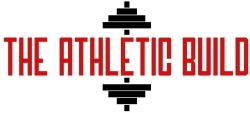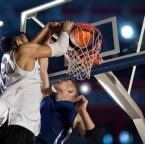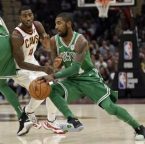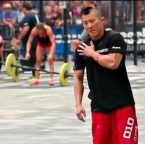If you’re trying to level up your game, hitting the court isn’t enough. You need to train like it matters, because it does.
Basketball isn’t just about shooting threes or running drills till your legs fall off. It’s about power, speed, bounce, control… and yeah, a little bit of grit too. The right exercises can help you get there. The wrong ones? Just a waste of sweat.
This isn’t a generic list. These are the movements that actually help you explode off the floor, stay solid through contact, and outlast guys who just play pickup twice a week and think that’s training.
Let’s get into it. Here are 10 of the best exercises for basketball players who are serious about getting better.

10 Best Exercises for Basketball Players
These are the best exercises that will help you reach your full potential as a basketball player.
Jump Squats
Let’s be honest. Basketball is a vertical game. You’re jumping for boards, jumping to block shots, jumping to hit floaters over some 6’8″ dude trying to send your layup into the seats. If you want to play above the rim, you need more than just hops. You need power.
That’s where jump squats come in. This exercise builds explosive strength from the ground up. It trains your quads, glutes, hamstrings, and calves to work together and fire hard. Over time, that means a higher vertical and quicker takeoffs. It’s simple, brutal, and ridiculously effective.
The movement forces your body to absorb and generate force in quick succession. That carryover? It’s huge. Whether you’re sprinting for a fast break or contesting a shot, those same muscles are doing the work.
Start with bodyweight. Add resistance later if you’re feeling spicy. But even just your own weight can be enough to leave your legs screaming in the best way.
How to perform jump squats:
- Stand with feet shoulder-width apart, toes slightly pointed outward.
- Lower into a squat position, thighs parallel to the ground.
- Explode up, extending legs and swinging arms upward.
- Land softly, bending knees and hips to absorb the impact.
- Repeat the motion in a fluid and continuous manner.
Lunges
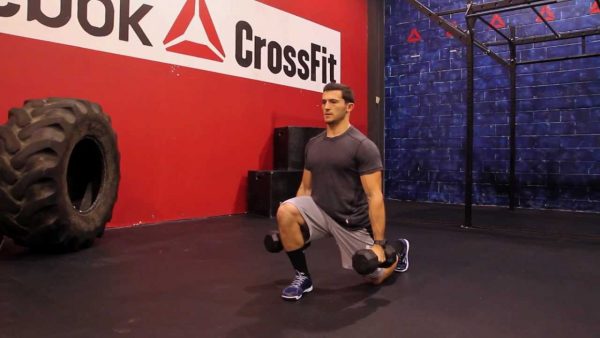
You can’t play basketball without being in a lunge position half the time. Driving to the hoop, playing defense, pulling up mid-stride, it’s all built on that staggered stance.
That’s why lunges aren’t optional. They teach your legs to move with control, fire with power, and stay stable when everything around you is chaos. They don’t just build strength, either. Lunges help bulletproof your knees, ankles, and hips so they don’t fold when you cut hard or land awkward.
Plus, they hit both legs individually. That matters. Basketball doesn’t happen in perfectly balanced squats, it happens one leg at a time, often in weird positions. Lunges prep your body for that.
Bodyweight is fine when you’re starting out. Once that feels easy, grab some dumbbells. You’ll feel the difference pretty quick.
How to Perform Lunges
- Stand with your feet hip-width apart.
- Take a step forward with one leg, lowering your body until both knees are bent at a 90-degree angle.
- Keep your front knee directly above your ankle and ensure your back knee is parallel to the ground.
- Push through your front heel to return to the starting position.
- Repeat with the other leg by stepping forward and bending both knees.
- Continue alternating legs for the desired number of repetitions.
- Maintain an upright posture throughout the exercise.
Plyometric Push-Ups
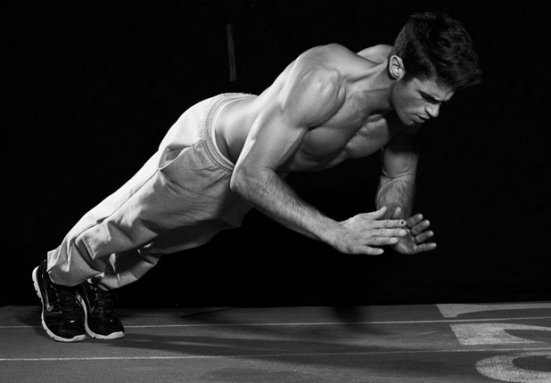
Basketball isn’t just legs. You’ve got to fight for space, absorb contact, and still dish a clean pass or finish strong at the rim. That takes upper body pop.
Plyo push-ups train that explosiveness. They build chest, shoulder, and triceps strength, but more importantly, they teach your body how to react fast and hit hard when it counts.
You don’t need to clap mid-air or do anything flashy. Just push off the ground with force, catch yourself smooth, and repeat. It’s raw, simple, and works better than most people realize.
How to Perform Plyometric Push-Ups
- Start in a traditional push-up position with your hands slightly wider than shoulder-width apart and your body in a straight line from head to toe.
- Lower your chest toward the ground by bending your elbows, keeping them at a 45-degree angle to your body.
- Push explosively through your hands, propelling your upper body off the ground.
- In mid-air, quickly bring your hands back to the starting position, ready to absorb the impact.
- Land softly with your elbows slightly bent to cushion the landing.
- Immediately go into the next repetition, repeating the explosive push-off and soft landing.
- Keep your core engaged and maintain proper form throughout the exercise.
Lateral Bounds
Yeah, they look a little goofy. You’ll feel weird doing them at first. But if you play basketball, lateral bounds are a must.
Defense, cutting, sliding to stay in front of your man, the game moves sideways more than people think. This drill trains your legs to explode out and stick the landing. That means quicker cuts, better balance, and fewer times you get blown by on a crossover.
They also hit the glutes hard, which is always a win. Add them into your warm-up or toss them into your agility days. Either way, they’ll quietly turn you into a more athletic player without needing a weight in sight.
How Yo Perform Lateral Bounds:
- Start in an athletic stance with your feet shoulder-width apart, knees slightly bent, and core engaged.
- Take a lateral hop to the side, pushing off with one foot and landing on the opposite foot.
- As you land, absorb the impact by bending your knees and maintaining balance.
- Immediately explode back in the opposite direction, pushing off with the landing foot and landing on the other foot.
- Continue alternating lateral bounds, focusing on explosive and controlled movements.
- Maintain proper form throughout, keeping your chest up, shoulders back, and eyes forward.
- Use your arms to generate momentum and aid in the lateral movement.
- Start with smaller hops and gradually increase the distance and intensity as you become more comfortable and proficient.
You may look a little silly doing lateral bounds but they will pay off.
Med Ball Throws
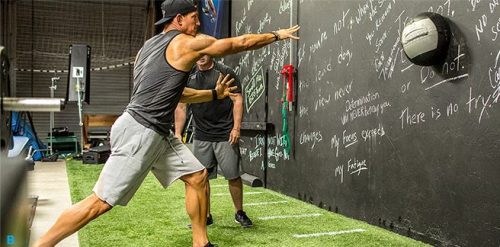
Med ball throws, and slams are among the best ways for athletes to increase power.
Many athletes use Olympic lifts like snatches and power cleans to build power and explosiveness. There is a problem with Olympic lifts, though. They are hard to learn and perform correctly.
That’s where med ball throws come in, med ball throws mimic the Olympic lift exercises, but they are much easier to learn and are quite a bit safer than Olympic lifts.
Medicine ball training encompasses speed, power, and accuracy, making it a dynamic and fast-paced exercise. These three aspects are crucial in various athletic sports and physical training. By engaging in med ball exercises, you can enhance your capabilities as an athlete, both in the gym and on the field, becoming more adept in these essential areas.
How To Perform Med Ball Throws:
There are many different variations of med ball throws, here is how to perform a general chest pass.
- Stand with your feet shoulder-width apart, holding the medicine ball at chest level.
- Engage your core and maintain a stable stance.
- Generate power by forcefully extending your arms and explosively throwing the ball forward.
- Release the ball at the peak of your throw, using a pushing or throwing motion.
- Follow through with your arms and transfer your weight from your back leg to your front leg.
- Catch the ball if it’s a rebound or retrieve it if it’s a throw against a wall or to a partner.
- Repeat the movement for the desired number of repetitions or as part of a specific exercise routine.
- Focus on maintaining proper form and technique throughout the exercise.
Agility Drills
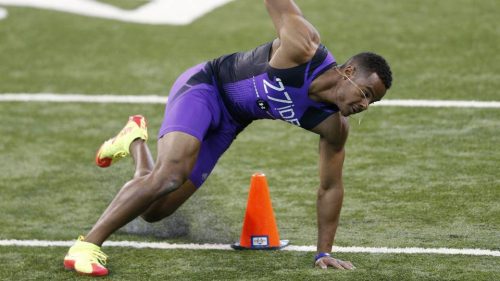
Basketball isn’t a straight-line sport. You’re starting, stopping, cutting, recovering, reacting. And if your feet can’t keep up, you’re toast.
That’s where agility drills come in. Think ladders, cone drills, and short bursts with direction changes. Doesn’t have to be fancy. It just has to be fast and sharp. The goal is simple, move better.
These drills don’t just build foot speed either. They dial in body control, timing, and reaction. You’ll start to feel quicker. Lighter. More locked in when the game gets messy.
Related: Best Agility Drills For Basketball Players
Bulgarian Split Squats
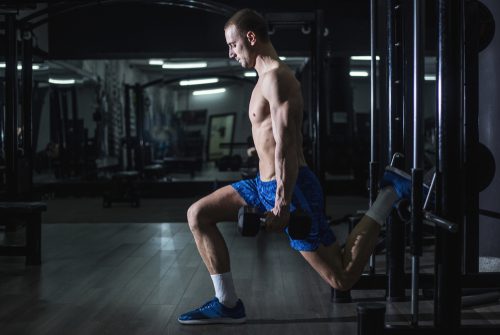
These are brutal. But that’s kind of the point.
Bulgarian split squats build serious leg strength, one side at a time. Which is perfect for basketball, since the game rarely happens with both feet planted like a barbell squat. It’s all one-leg jumps, off-balance drives, quick plants into cuts. This move trains you for that.
You’ll feel it in your quads, glutes, and hamstrings. But what sneaks up on you is the balance part. It lights up your core, your stabilizers, your brain a little too. You can’t fake your way through these.
Start with bodyweight. Add dumbbells when you’re ready. Just don’t expect to breeze through them. You won’t.
How to Perform the Bulgarians Split Squat:
- Stand facing away from a bench or elevated platform, with one foot resting on top of it, shoelaces down.
- Take a step forward with your other foot, creating a comfortable distance between your feet.
- Keep your torso upright, engage your core, and maintain proper posture throughout the exercise.
- Lower your body by bending your front knee and descending into a lunge position. Ensure that your knee remains in line with your toes, and your back knee hovers just above the ground.
- Pause briefly at the bottom of the movement, then push through your front heel to return to the starting position.
- Perform the desired number of reps with each leg.
Deadlifts
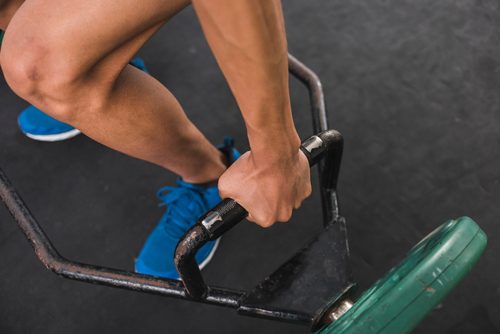
This one’s a classic for a reason. Deadlifts build raw strength, the kind that shows up when you’re driving through contact or going up strong in traffic.
They hammer your posterior chain: glutes, hamstrings, back, even your grip. And when done right, they teach you how to generate force from the floor. That skill transfers to literally everything you do on the court.
We like the trap bar version for athletes. It’s a bit more forgiving on the back and keeps your torso in a stronger, more natural position. Load it up, drive through your heels, and stand tall.
There are many forms of deadlifts out there, but we like the trap bar deadlift the best for athletes;
How To Perform The Deadlift
- Stand in the center of the trap bar with your feet shoulder-width apart.
- Position your feet so that the barbell is aligned with the middle of your feet.
- Bend your knees and hinge at the hips to lower your torso.
- Reach down and grip the handles of the trap bar with a neutral grip (palms facing each other).
- Keep your back straight, chest lifted, and core engaged.
- Take a deep breath and brace your core.
- Drive through your heels and extend your hips and knees simultaneously to lift the bar off the ground.
- Keep your back straight throughout the movement, avoiding any rounding or excessive arching.
- Stand tall with the barbell, fully extending your hips and knees.
- Repeat for the desired number of reps
Suicide Sprints
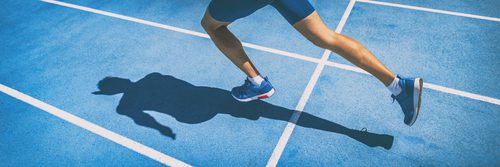
Nobody likes them. But they work.
Suicides build the kind of conditioning that actually shows up in a game. Not just jog-around-the-block cardio. Real, stop-and-go, fight-for-air stamina. That’s what basketball demands.
They also sharpen your speed, footwork, and mental toughness. The constant cutting, decelerating, pushing off again, it mimics what happens every trip down the floor. And yeah, they suck. But that’s part of it.
Push through the burn, hit your marks, and keep showing up. Players who can finish strong in the fourth? They usually train like this.
How to Perform Suicide Sprints:
- Start at a designated starting point, such as the baseline of a basketball court or a marked spot on the ground.
- Sprint as fast as you can towards a specific point, such as the free-throw line or a designated marker.
- Touch the line or marker with your hand or foot and immediately change direction.
- Sprint back to the starting point as quickly as possible.
- Once you reach the starting point, immediately sprint towards the next designated point or marker, which is typically farther away, such as the half-court line or another predetermined spot.
- Touch the line or marker and change direction to sprint back to the starting point again.
- Repeat this pattern, sprinting to different points or markers with each repetition.
Final Word
There you have the 10 best exercises for basketball players. Keep in mind, these exercises are just for strength and performance. You will need some actual basketball skills to go along with these exercises, or you won’t be very good. But if you have a solid game, then adding these exercises can make you a more powerful and explosive player than you would typically be.

Wayne Mutata is a Certified USA Weightlifting Coach, Nike SPARQ Combine Trainer, and recognized supplement specialist with over a decade of professional experience. He holds a Master’s degree in Physiology and Anatomy, along with double minors in Dietary Nutrition and Exercise Science from the National Personal Training Institute of Philadelphia.
Wayne is a sought-after Strength and Conditioning expert, working with professional athletes including MMA fighters and elite Figure/Bikini competitors. His training methods are grounded in science and tailored for peak performance. Beyond coaching, Wayne has built a public profile as a fitness model and on-camera fitness personality, appearing on the cover of Fitness101 magazine and earning a nomination in the Men’s Health Ultimate Guy competition.
As the founder of Itrainwithwayne, he delivers custom workout programs, supplement protocols, and online training to clients across the United States and internationally. The Itrainwithwayne brand operates two training studios, the headquarters in Lancaster, PA, and a second location in Philadelphia, PA.
